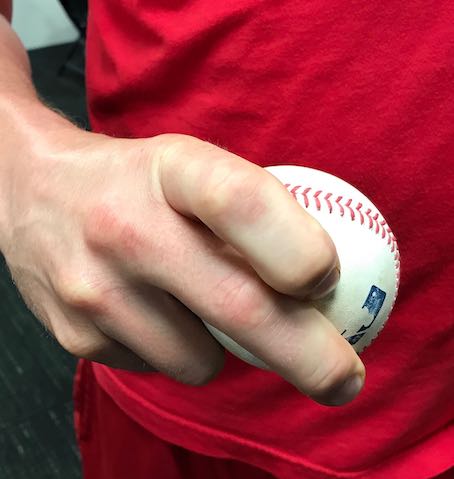Trevor Cahill, Marco Gonzales, and David Phelps on Crafting Their Curveballs
Pitchers learn and develop different pitches, and they do so at varying stages of their lives. It might be a curveball in high school, a cutter in college, or a changeup in A-ball. Sometimes the addition or refinement is a natural progression — graduating from Pitching 101 to advanced course work — and often it’s a matter of necessity. In order to get hitters out as the quality of competition improves, a pitcher needs to optimize his repertoire.
In this installment of the series, we’ll hear from three pitchers — Trevor Cahill, Marco Gonzales, and David Phelps— on how they learned and developed their curveballs.
———
Trevor Cahill, Los Angeles Angels
“I didn’t throw my [current] curveball until my second year in the big leagues. I used to throw the double-knuckle — I didn’t spin it; I would literally flick it — and that worked in the minor leagues. It was actually my strikeout pitch. But once I got up here, I couldn’t really throw it with the big-league ball. Not consistently.
“The seams in the minor leagues were bigger, and that made a difference. Plus, big league hitters are more patient. I used to throw that pitch in the dirt a lot, and get swings, but I had trouble throwing it for strikes. Big league hitters, if you can’t throw it for a strike, they see that spin and just spit on it.

“One day I was playing catch with Brett Anderson, working on his slider grip, which he spikes. I did that, and it was really good on flat ground, so that offseason I started working on it. Then my finger started coming up higher, so I was throwing a normal spiked curveball. In 2010, in spring training, I started using it against hitters. I’ve thrown it ever since. Read the rest of this entry »


